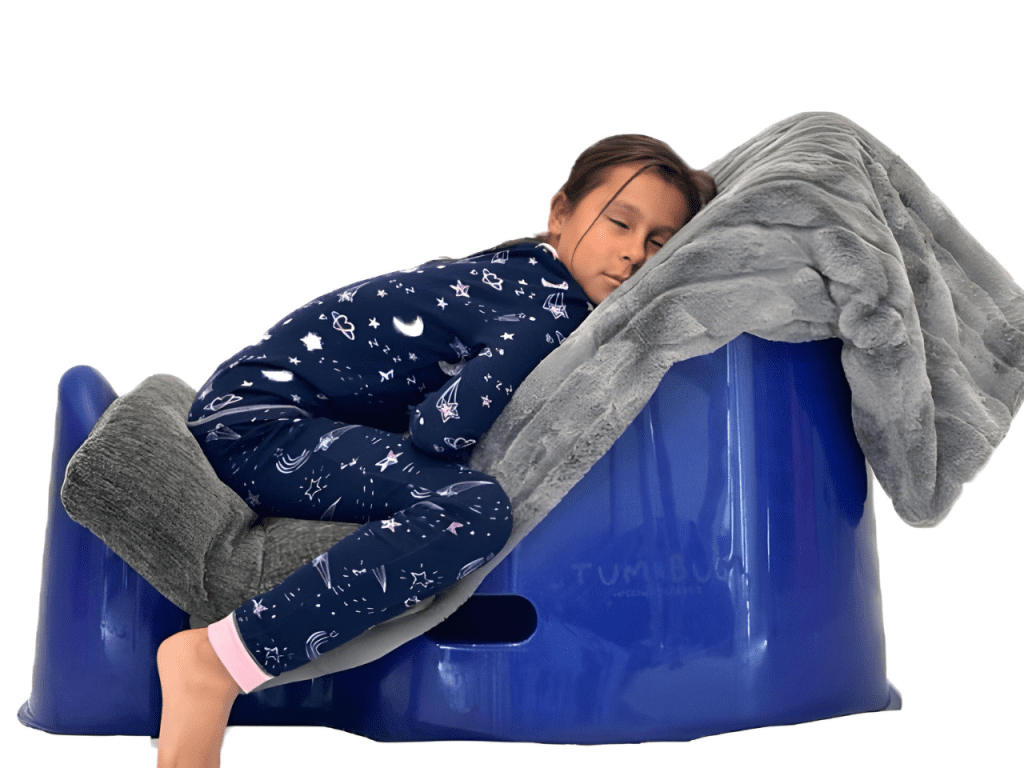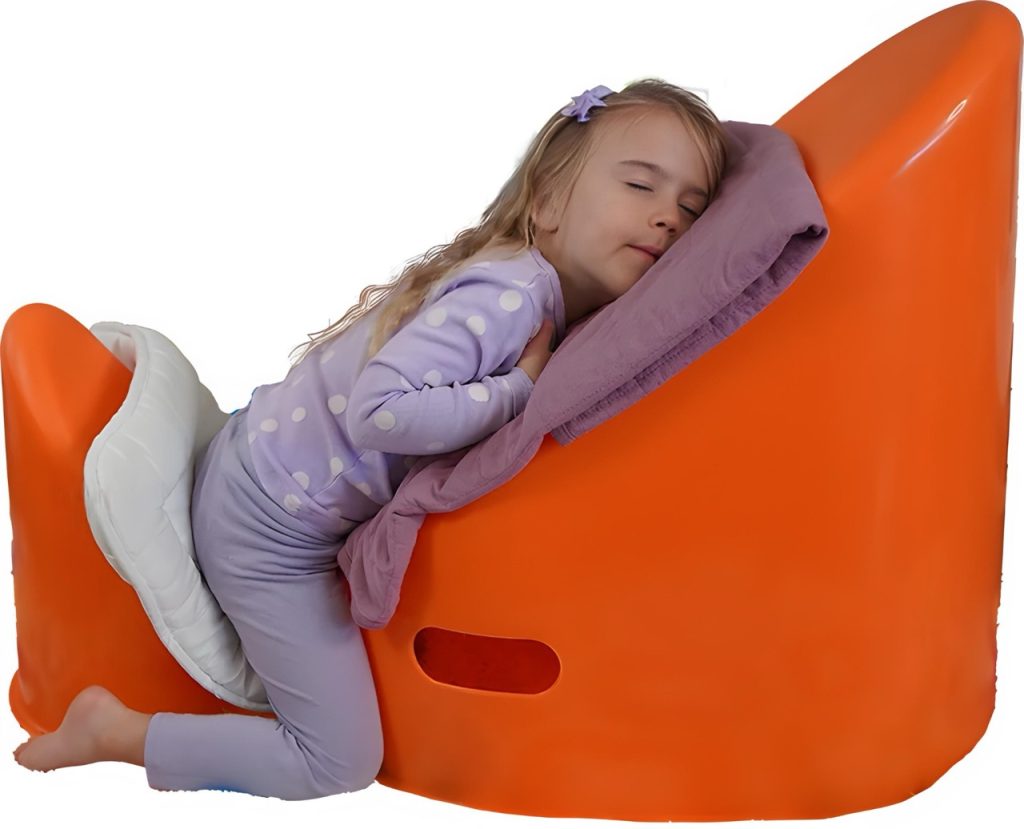The Science
Best Sleeping Positions When Sick

One of the most difficult parts of having a sick child is the consequent trouble they have falling asleep. General cold symptoms children experience while sick can include signs such as congestion, coughing, a runny nose, and sneezing. When children are unable to get an adequate night’s rest, it can make it even more difficult to overcome an illness and causes distress to both the child and parents. While there are many medicinal remedies out there to help overcome common colds, some of the most beneficial techniques are not medication-related at all. In fact, something as simple as sleep positioning can help your child to rest more soundly at night.
We created the Tum&Bum to provide optimal sleep positioning that will allow your child to sleep with greater ease and reduced cold and flu symptoms. The Tum&Bum was designed so that a child is positioned forward-facing and at an incline. While this sleep position may be slightly unconventional, evidence exists supporting its use for sleep while battling sickness, particularly with regards to congestion.
Benefits of sleeping at an incline
Sleeping at an incline is one of the best ways to guarantee a more restful night’s sleep while battling the cold or flu. To understand why this position is beneficial, it is important to understand the science behind congestion. When many of us experience nasal congestion, we feel tightness in our head or nose, causing headache, stuffiness, and a reduced ability to breathe. On a biological level, these sensations are caused by inflammation of the mucosa, which is the lining of your nose, mouth, and lungs. It can also cause increased nasal secretions and tissue swelling, thereby affecting your nasal passage and ability to breathe (1).
When you are lying down, the blood vessels in the mucosa of your nose change, thus altering blood flow. Additionally, lying down in certain positions can cause compression of the neck veins. Both of these phenomenons can contribute to worsened feelings of congestion. By changing your sleep posture to be at an incline, you can change your nasal area and volume. This is the reason why people with the cold or flu often sleep with their heads at an incline of a few inches. Studies have found that being upright can improve your ability to breathe by allowing congestion to drain out of your head, reducing sinus pressure and making it easier to breathe (2).
Benefits of sleeping forward-facing

In addition to chest congestion, individuals may also experience chest congestion when sick. Postural drainage is a technique that involves altering your body’s position to help promote drainage from your lungs. Postural drainage, also referred to as airway clearance therapy, is often used for chronic conditions involving lung congestion, such as COPD and cystic fibrosis (3). However, one may hypothesize that such methods may also work for congestion associated with the cold or flu.
Postural drainage utilizes gravity to help your lungs drain. While there are various positions to try with postural drainage, one known as posterior segments is particularly useful. This position targets the upper lobes by leaning a child forward at a 30-degree angle, helping to drain excess mucus. This position closely resembles the positioning on the Tum&Bum, which is forward-facing (4).
References
(1) Naclerio, R. M., Bachert, C., & Baraniuk, J. N. (2010). Pathophysiology of nasal congestion. International Journal of General Medicine, 3, 47–57.
(2) Roithmann, R., Demeneghi, P., Faggiano, R., & Cury, A. (2005). Effects of posture change on nasal patency. Brazilian Journal of Otorhinolaryngology, 71(4), 478–484. https://doi.org/10.1016/s1808-8694(15)31203-9
(3) Belli, S., Prince, I., Savio, G., Paracchini, E., Cattaneo, D., Bianchi, M., Masocco, F., Bellanti, M. T., & Balbi, B. (2021). Airway clearance techniques: The right choice for the right patient. Frontiers in Medicine, 8, 544826. https://doi.org/10.3389/fmed.2021.544826
(4) Performing postural drainage for people with copd. (n.d.). Verywell Health. Retrieved April 14, 2022, from https://www.verywellhealth.com/postural-drainage-4020317
Video, “The Science Behind the Tum & Bum”
Newton, A., Cardani, A., & Braciale, T. (2016). The host immune response in respiratory virus infection: balancing virus clearance and immunopathology. Seminars In Immunopathology, 38(4), 471-482. doi: 10.1007/s00281-016-0558-0
Xi, J., Si, X., Zhou, Y., Kim, J., & Berlinski, A. (2013). Growth of Nasal and Laryngeal Airways in Children: Implications in Breathing and Inhaled Aerosol Dynamics. Respiratory Care, 59(2), 263-273. doi: 10.4187/respcare.02568
Marvels of Mucus and Phlegm. (2020). Retrieved 10 April 2022, from https://newsinhealth.nih.gov/2020/08/marvels-mucus-phlegm

